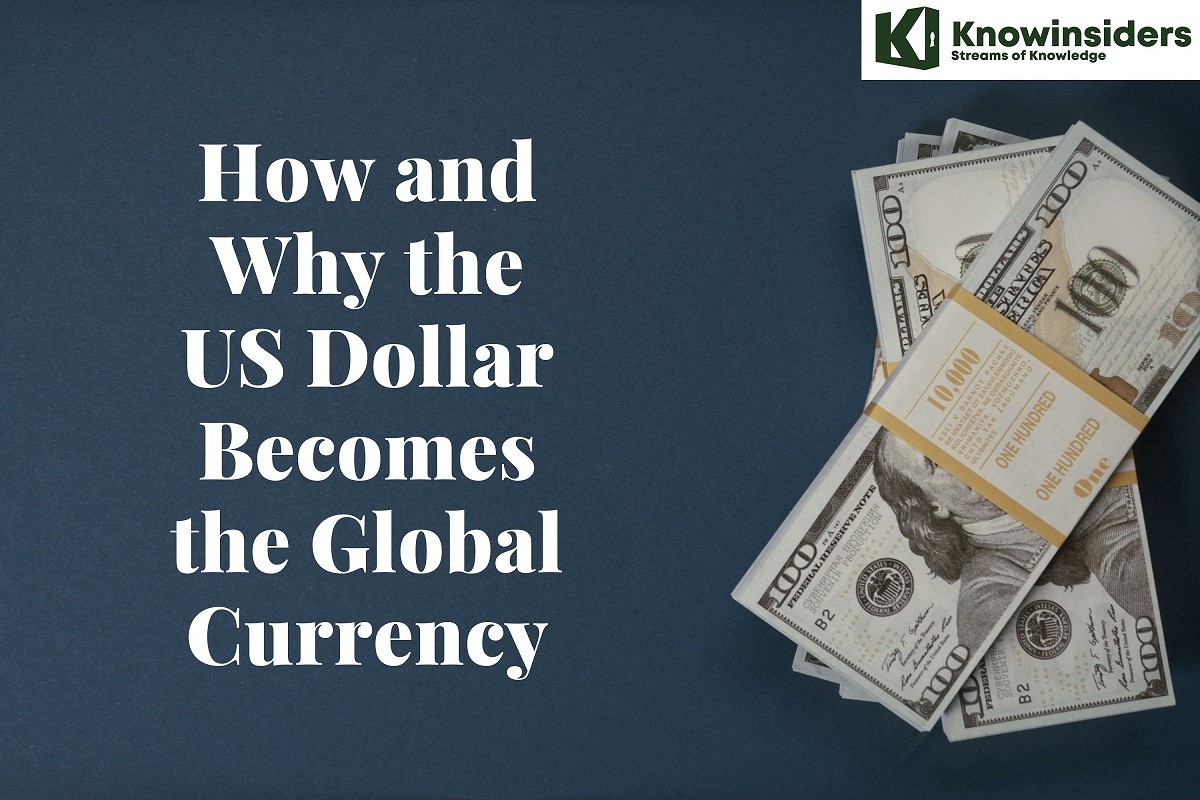Top 12 Rarest Types of Dollar Bills In American History
| Table of Contents |
The United States has a complicated history with its currency, including a variety of banknotes, misprints, and limited editions that may be extremely valuable, despite its relatively brief history.In 1792, the United States Mint began producing coins that were equivalent to the Spanish American silver dollar. Over time, the mint added new denominations and frequently altered the appearance of the banknotes.
The most astonishing truth is that a lot of paper money and gold coins are far more valuable than some of the most exquisite houses in the nation.
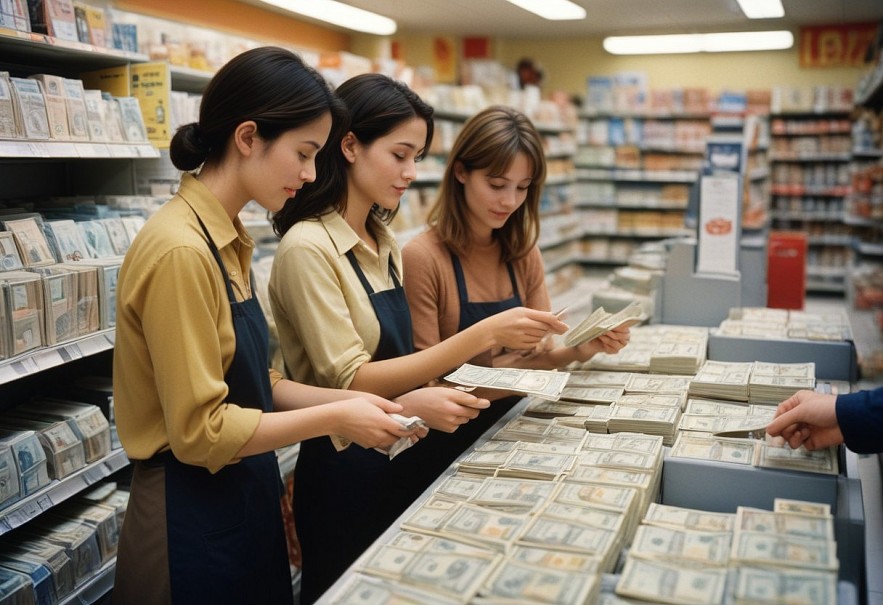 |
| Top 12 Rarest US Currencies In The History |
Top 12 Rarest US Dollar Bills In The History
1. Ladder
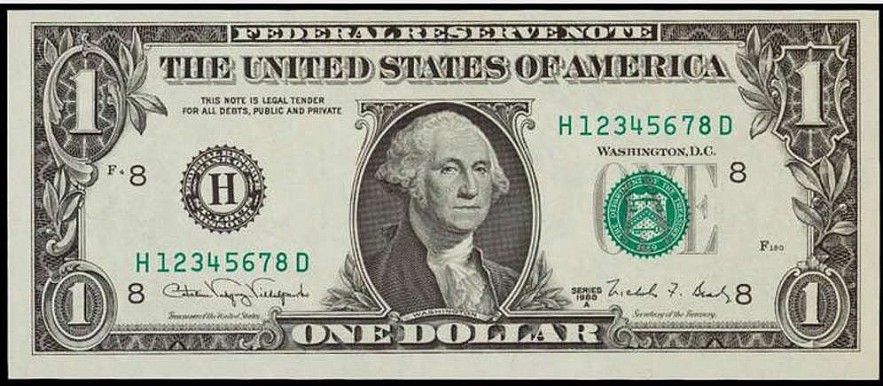 |
Odds of finding one: 1 in 16,666,667
Worth: $5,000 +
The rarest dollar note ever is the ladder denomination. Since a true ladder only happens once in every 96 million notes, there are two categories inside the ladder serial number. A serial number that adheres to the conventional one through eight number pattern is called a ladder. It is mentioned that a true ladder is 12345678 and is not easily located. The ladder pattern can be varied by using numbers that don't begin with a 1, such 00123456 or 034567.
Ladders that have the numbers arranged in reverse can also be backwards. Compared to the original, both of these versions are less valuable and more common.
2. Repeater
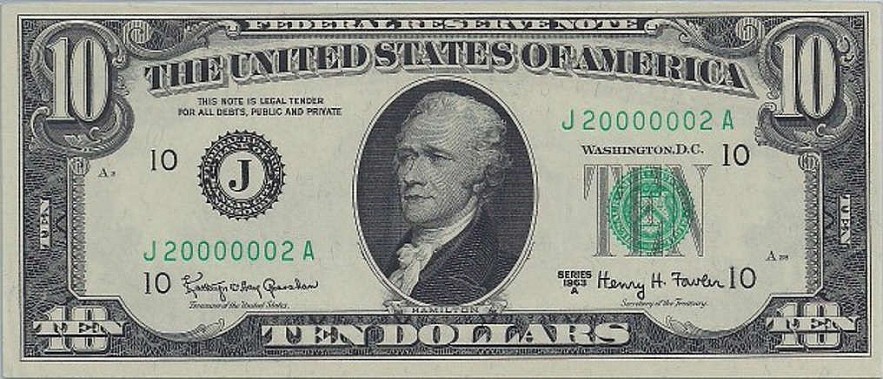 |
Odds of finding one: 1 in 10,010
Worth: about $100
Reapers are very self-explanatory. It specifies a note with a serial number that exhibits any kind of pattern repetition. Any kind of numbers in any arrangement can be used in these patterns as long as they match the necessary requirements.
Repeater notes are therefore not very valuable because, although being rare, they are considerably easier to find. Nevertheless, they continue to be valued as collectibles.
3. Radar
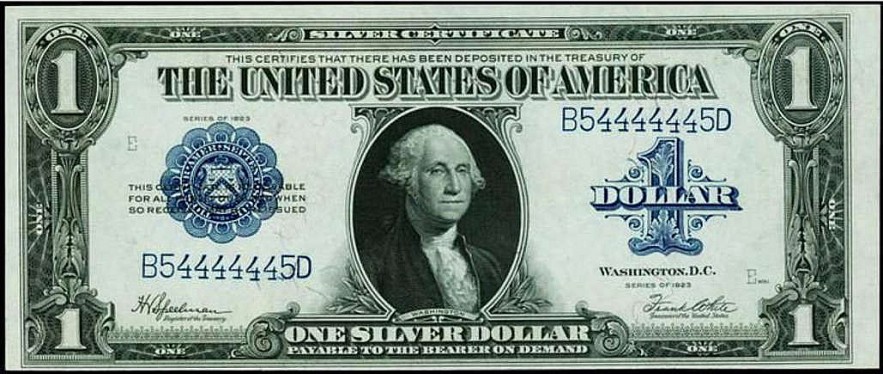 |
Odds of finding one: 1 in 10,010
Worth: about $25, but could be more
A radar is a note that has a serial number that is, in a sense, a numerical palindrome that reads the same both ways. The name radar comes from the fact that the term itself is a palindrome. In contrast to other serial patterns, collectors do not view it as rare, even though it only appears once every 10,000 times. However, radars were not as widely used before 1958, therefore a radar bill from that era could be slightly more valuable. To increase your earnings from collectors and auctions, look for radars that have additional intriguing features.
4. Super Radar
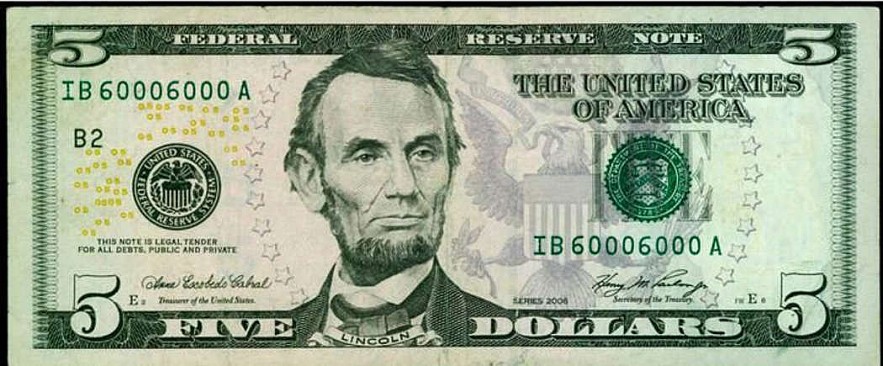 |
Odds of finding one: 1 in 1,111,111
Worth: About $80
One subset of the radar is the super radar. Six repeating and/or patterned numbers are sandwiched between the matching first and last digits in this pattern. For instance, 8455548 and 20000002 are both super radars. It's interesting to note that your chances of discovering this kind of bill are comparable to those of a double quad and a radar repeater. This illustrates a potential pattern seen in serial numbers with patterns.
5. Seven-in-a-row
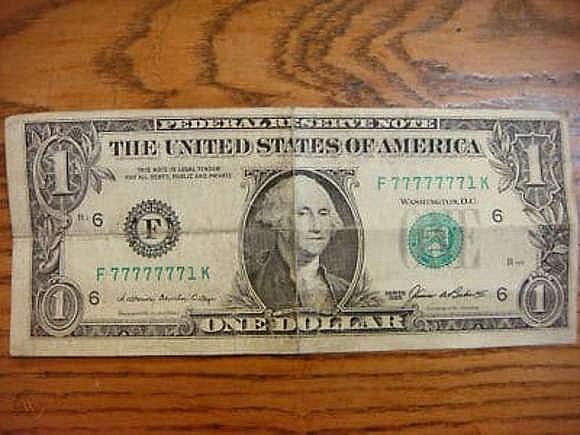 |
Odds of finding one: 1 in 555,556
Worth: About $200
Unlike a dollar that has a unique serial number, a seven-in-a-row coin needs to have a repeated number that doesn't break. For instance, it would contain the number at the start or finish of the series instead of 77717777. It is highly unlikely to encounter a dollar bill with seven consecutive identical numbers in order because serial numbers are assigned at random. One vendor made an even bigger impression by discovering a $20 bill featuring seven sevens consecutively.
6. Double Quad
 |
Odds of finding one: 1 in 1,111,111
Worth: Inconclusive
The dollar bill moves into more patterned territory with the double quad. A double quadruple has one number repeated at the beginning and another number repeated at the conclusion, in contrast to a binary serial number, which can have two digits in any arbitrary order. Double quads are very uncommon because this exact serial number requires a great deal of detail. This kind of dollar bill has an enormous value range; some Ebay sellers are asking $20, while others are seeking $999.
7. Solid
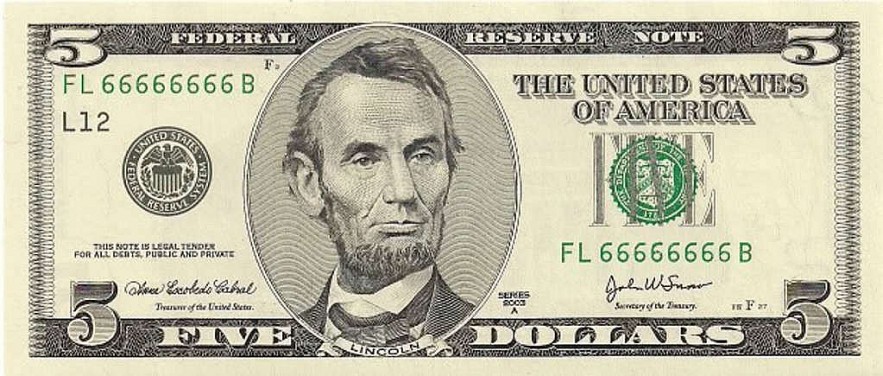 |
Worth: $500, but can go into the thousands
Solid serial numbers are quite expensive, starting at $500, and are very unusual. The serial number of a dollar with a solid pattern repeats the same number. As the number rises, so does their worth. Thus, a solid nine-digit serial number, for instance, is worth more than a repeating two-digit number. Solid nines are actually the most valuable variant of the solid since current serial printing only allows for values up to 96000000. If the serial number's letters match, the buyer can pay even more.
American banks possessed the authority to design, develop, and manufacture their own tenders prior to the establishment of money that was managed by the federal government. Consequently, there were roughly 7,000 distinct notes in use.
8. Binary Dollar Bill
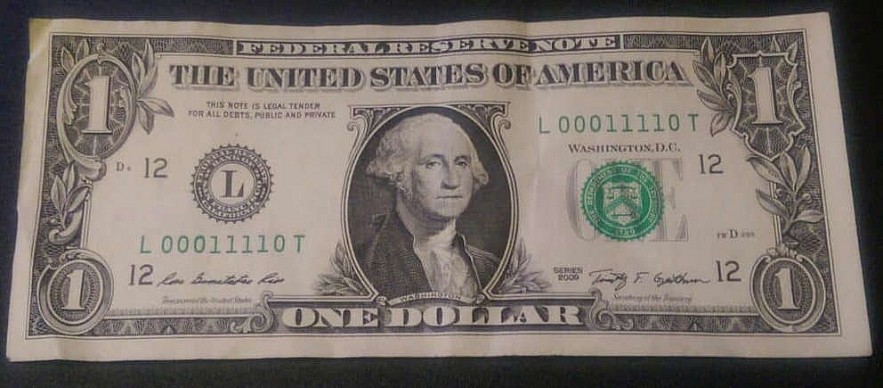 |
Odds of finding one: 1 in 8,749
Worth: $10 or $50
Binary serial numbers consist exclusively of the numbers one and zero. The value of a binary dollar depends on the pattern, with some collectors seeking particular combinations over others. In total, all binary dollars are worth some amount of money as they are generally rare. Some collectors consider two repeated numbers that are not one and zero to be binary as well, but most define these dollars.
9. Continental
Worth: $1
It wasn't until 1775 that the American colonies began issuing their own money, known as Continental Currency. The exchange value of Continental notes had dropped to one-hundredth of their usual worth, and by 1781, it was expected to drop to 1,000 to 1. This information is based on the Harvard Library. The U.S. Mint was then founded by the Coinage Act of 1792, completely replacing any Continental Currency.
People threw away their old notes as a result of the value decline, but there have also been overstated figures of the quantity of Continental Currency issued during the war years. "The $500,000 [notes] mentioned on 2 November 1776 were not printed at all," according to an article from 2008. Thus, it's possible that even fewer notes were printed than what historical sources have shown.
10. Treasury Note
Worth: $1
One particularly intriguing kind of US money are Treasury dollar notes. The Legal Tender Act of July 14, 1890, allowed Treasury Notes to be issued between 1890 and 1891, according to the Bureau of Engraving and Printing. When holders of silver bullion turned them in, the American Treasury distributed these notes, which could subsequently be exchanged for coins.
In comparison to regular currency, fewer Treasury Notes were issued in 1890 as a result of this brief production period. In a similar vein, Treasury Notes were only distributed under particular circumstances, most likely making them unavailable to the majority of Americans. As a result, fewer Treasury Notes were produced to last for more than a century, as fewer people qualified for them.
11. Silver Certificate
 |
Worth: $1
The 1896 Silver Certificate dollar bill, which is part of the "Educational Series" and embraces the Neoclassical style, has artwork depicting the youth teacher of history as an allegorical figure. Similar mentoring encounters with other subjects are depicted in other notes.
According to GovMint.com, Q. David Bowers, in his book 100 Greatest Currency Notes, listed this $1 Educational Note as number seven. Why is it so uncommon? Only 7,000–9,000 of the 20 million dollars that were printed have made it to the new millennium, according to GovMint.
Where Are Those Priceless $1 Bills Found?This is when things might become difficult. The likelihood of coming across a dollar bill from the 19th century in circulation is very low. Antiquated family treasures may contain such ancient dollar bills. Look in books, bibles, pockets, and picture frame backs to see if any cash is missing. Still, there's a considerable probability that you will come across misprinted, star, and ladder dollar bills in circulation. Always ask for change back in dollar bills to increase your chances of finding these. And make sure every bill you come across has the beneficial qualities we've covered. It's far too simple to unknowingly handle an expensive dollar bill without realizing it. |
12. $1 Bill With Serial #1
The Bureau of Engraving & Printing states that the first United States $1 notes, also known as United States Notes and Legal Tenders, were printed in 1862. Since 1862 was the first year they were printed, it would be especially unusual to find a note with that date.
In a similar vein, discovering one with a serial number as low as #1 would increase the value of any old dollar bill much above its face value, regardless of condition.
Conclusion
Money is a fickle thing. Save enough and you’ll be rich, but then it becomes worthless sitting in a bank. Spend it all and give it worth, but also have nothing left to fall back on. The only straightforward thing about money, it seems, are the values listed on it.
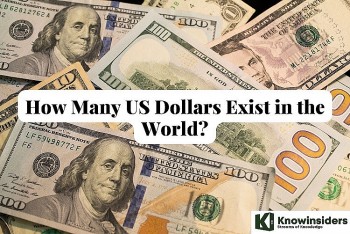 How Many US Dollars Exist in the World? How Many US Dollars Exist in the World? The dollar is the legal tender in the United States. This article list the value and volume of U.S. currency in circulation today. |
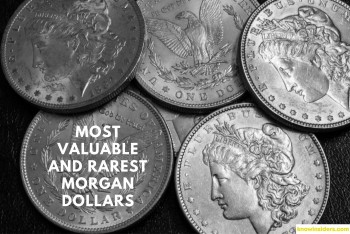 Top 14 Most Valuable and Rarest Morgan Dollars Top 14 Most Valuable and Rarest Morgan Dollars Do you love collecting coins? If you are a coin collector, you should not miss Morgan dollars in your collection. Check out Top 14 Most ... |
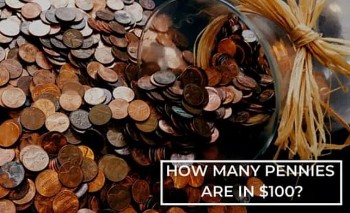 How Many Pennies Are In $100 - Does 1,000 Pennies Equal $100 Dollars? How Many Pennies Are In $100 - Does 1,000 Pennies Equal $100 Dollars? You can learn more about how many pennies, nickels, dimes, quarters, and half dollars there are in a total of $100 thanks to KnowInsiders.com. |


